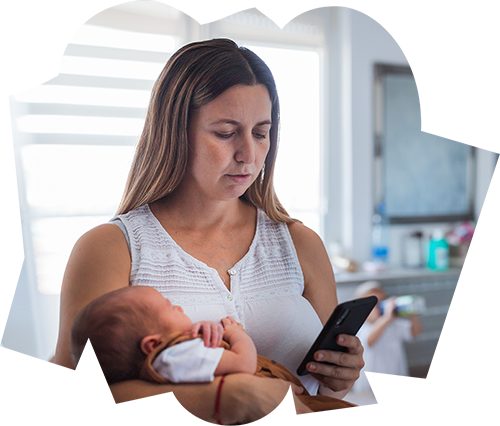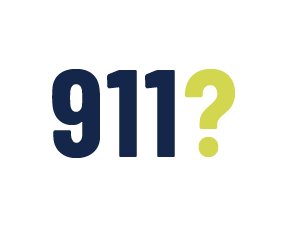Everyone has the right to feel safe in their home and live a life free from abuse.
Whether or not the police make an arrest or your situation is deemed “high danger” during the CT LAP screen, you have options to increase your safety. Connecticut has a variety of laws that seek to provide civil and criminal court-based protections for survivors. CCADV’s 18 member organizations are available across the state to guide you through the options and resources that can help keep you and your children safe.
This may include court-based protections and the processes that follow, or applying for programs that can help keep your location confidential or cover certain medical expenses or lost wages resulting from an injury not covered by insurance or other financial resources.
When is 911 the best option?
For a variety of reasons, some survivors are hesitant to call the police. Whether they don’t want their abuser arrested, are fearful that they may also be arrested, or don’t trust law enforcement, survivors understandably often weigh the pros and cons of initiating police intervention.
If you feel that your safety or your child’s safety is in immediate danger, 911 is always the best option.
If you feel the violence is escalating or you know your abuser has easy access to a weapon and has threatened to harm you with it, 911 is the best option. Trust your gut. If something feels off, it probably is. If you call the police and need help navigating the criminal justice system afterwards, advocates are here to help.
What are the steps taken at the scene of a domestic violence call?
When law enforcement is called to investigate a family violence incident, there are several steps they must complete in addition to stopping any active violence, providing medical assistance, and determining if there is probable cause to make an arrest.
Law enforcement must also provide family violence survivors with information on domestic violence services, provide victims of crime rights information, and, if a child is at the scene, provide resources for regional mental health services.
Understand the CT LAP Steps:
In intimate partner violence incidents, after all required investigative steps have been completed, law enforcement will then conduct the LAP screen with the survivor:
1. Introduction of the screen: “I would like to ask you some additional questions to get a better understanding about your relationship with your partner.“
2. Ask all eleven “yes” or “no” questions in order and follow up by asking if there is anything else that worries them about their safety.
3. If the answers are scored as a high-danger screen, the officer will call a local domestic violence advocate and connect the survivor.
4. If the answers are not scored as high-danger, the officer will remind the survivor that domestic violence can escalate quickly and they should consider calling Safe Connect to speak with an advocate or 911 if they feel that violence may occur.
5. Questions #1, 2, 5, & 11 are crimes in Connecticut. If any of these questions were answered with a “yes”, law enforcement will ask additional questions about the circumstances of the incident(s). If probable cause can be developed, law enforcement would submit an arrest warrant application to court for review. If the survivor is unsure if they want to provide additional information, they can talk with an advocate about their options.
6. Law enforcement may also initiate a high-danger referral based on their belief of potential danger.
Safety is always the number #1 priority.
LAP helps to ensure safety, accountability, and support. Answers to the LAP screen assist law enforcement in creating an awareness of danger and lethality. They also foster greater consideration of proactive interventions to help keep families safe.
The interactions through LAP assist law enforcement officers in educating victims, allowing them to see their situation through a different lens. LAP questions also enhance coordination, communication, and cooperation between law enforcement and domestic violence advocates.
More specifically, what if I respond to a call where the victim does not speak English, but someone on scene, such as a child or adult known to the victim, wants to assist with interpretation?
Law enforcement should never allow one party to interpret for the other and should never ask a child to interpret for their parents. It is imperative that law enforcement officers capture the account of the incident(s) from the eyes and voice of the victim.
Utilizing an interpreter secures neutrality, conveying information without bias, protecting the victim's confidentiality, and eliminating the emotional complications that may arise when involving family.
The immigration status should not affect the police response or service provision. It is important to reassure the victim that law enforcement is there to assist them regardless of their immigration status.
Want to talk through your situation with someone?
We have a team of friendly advocates ready to listen, guide, and support during relationship challenges. They understand that all relationships look different and can change overtime.



